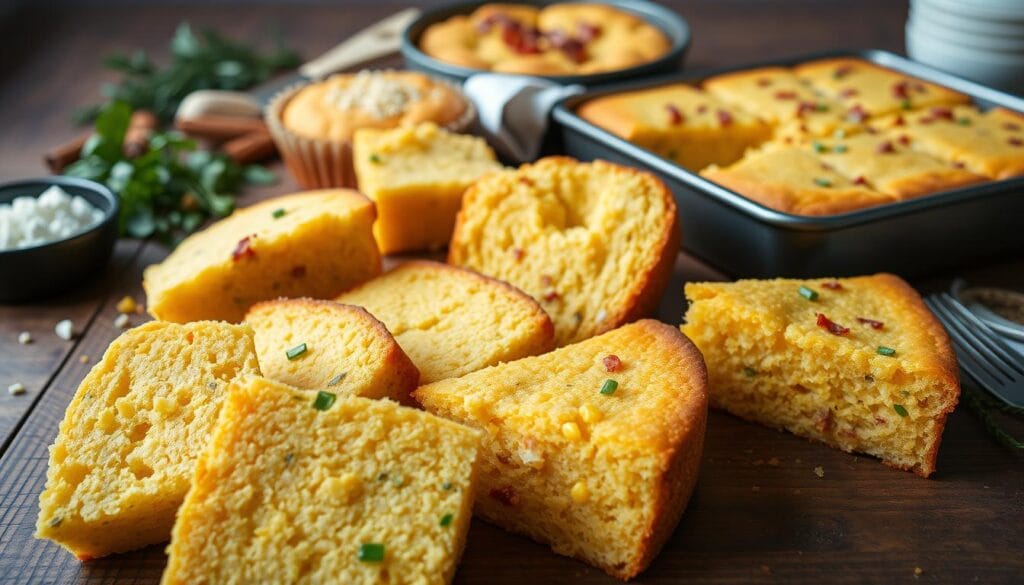A golden, tender cornbread made without gluten or dairy—crispy on the edges, soft in the center, and ready in under 30 minutes.
📋 Ingredients
- 1 cup fine-ground cornmeal
- 1 cup gluten-free flour blend (with xanthan gum)
- 1 tablespoon baking powder
- ⅓ cup coconut sugar (or maple syrup)
- 2 large eggs
- ¼ cup avocado oil (or melted dairy-free butter)
- 1 cup plant-based milk + 1 tbsp vinegar (buttermilk substitute)
⏱️ Prep Time: 10 mins
🔥 Cook Time: 20 mins
⏳ Total Time: 30 mins
🍽️ Servings: 8
🍳 Yield: 1 9-inch skillet cornbread
🧑🍳 Directions
Cool 10 mins before slicing and serving.
Preheat oven to 400°F. Place a greased 9-inch cast iron skillet inside while heating.
Mix wet ingredients: In a bowl, whisk eggs, oil, sweetener, and buttermilk substitute until smooth.
Mix dry ingredients: In a separate bowl, combine cornmeal, flour blend, and baking powder.
Combine wet and dry mixtures, stirring gently until just mixed. Do not overmix.
Bake: Pour batter into hot skillet. Bake 18–22 minutes or until golden and a toothpick comes out clean.

Conclusion
Reimagining classic comfort foods doesn’t mean losing what makes them special. This recipe proves simple swaps—like plant-based milk and gluten-free flour—can deliver moist crumb and crispy edges. With minimal prep time and common pantry staples, you’ll create golden slices ready in under 30 minutes.
Properly blending dry ingredients with wet components ensures ideal texture. A hot cast iron skillet works magic for that signature crust. Store leftovers using our tips to maintain freshness for days.
Feel empowered to tweak flavors—add jalapeños for heat or honey for sweetness. Every step, from mixing bowls to oven racks, has been tested for reliability. Share your creations and discover how small changes make this staple uniquely yours.
Thank you for exploring this guide. Now grab your skillet and bake with confidence—tradition and innovation belong in every bite.
Looking to expand your healthy cooking lineup? Discover even more delicious ideas with our Gluten Free Recipes on WhatForDinner.com—perfect for every meal of the day. For tips on mastering gluten-free baking, check out this guide from King Arthur Baking Company and explore safe ingredient swaps with Celiac Disease Foundation’s gluten-free diet overview.
